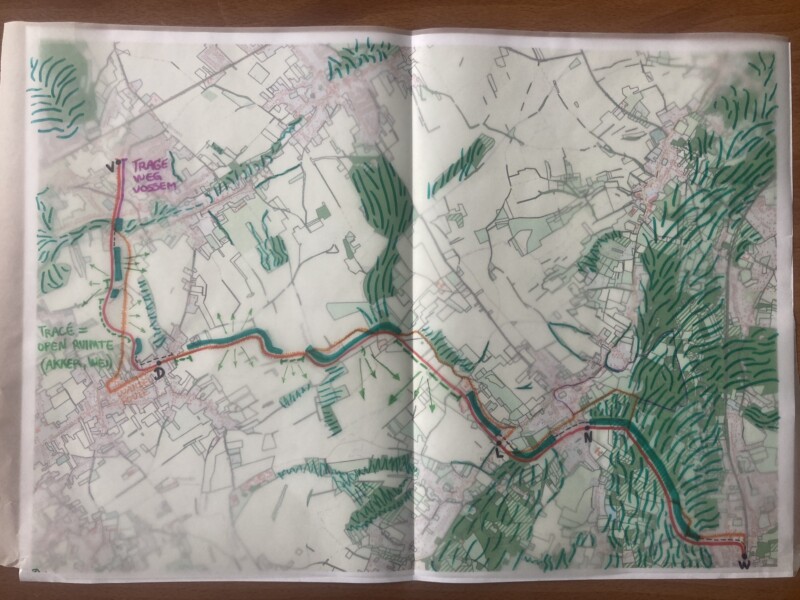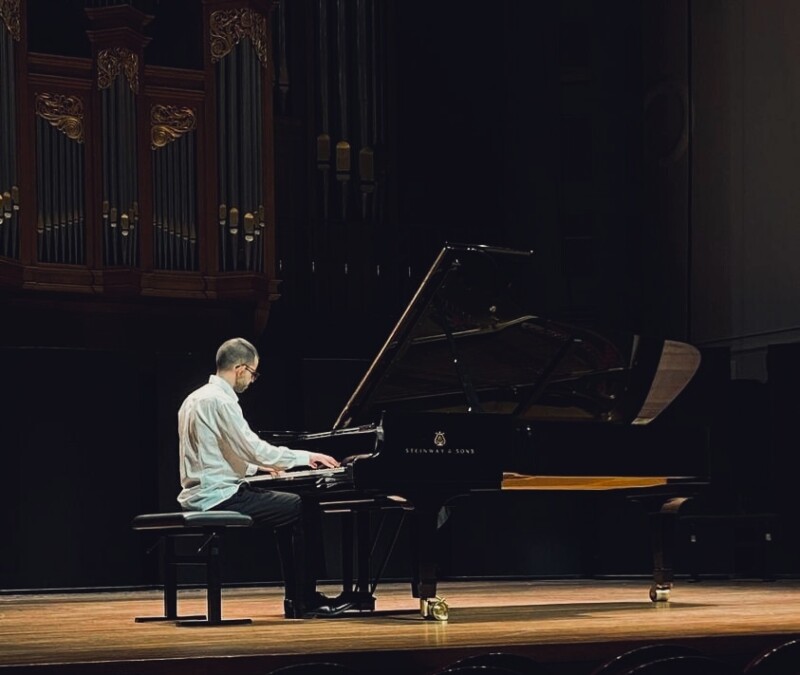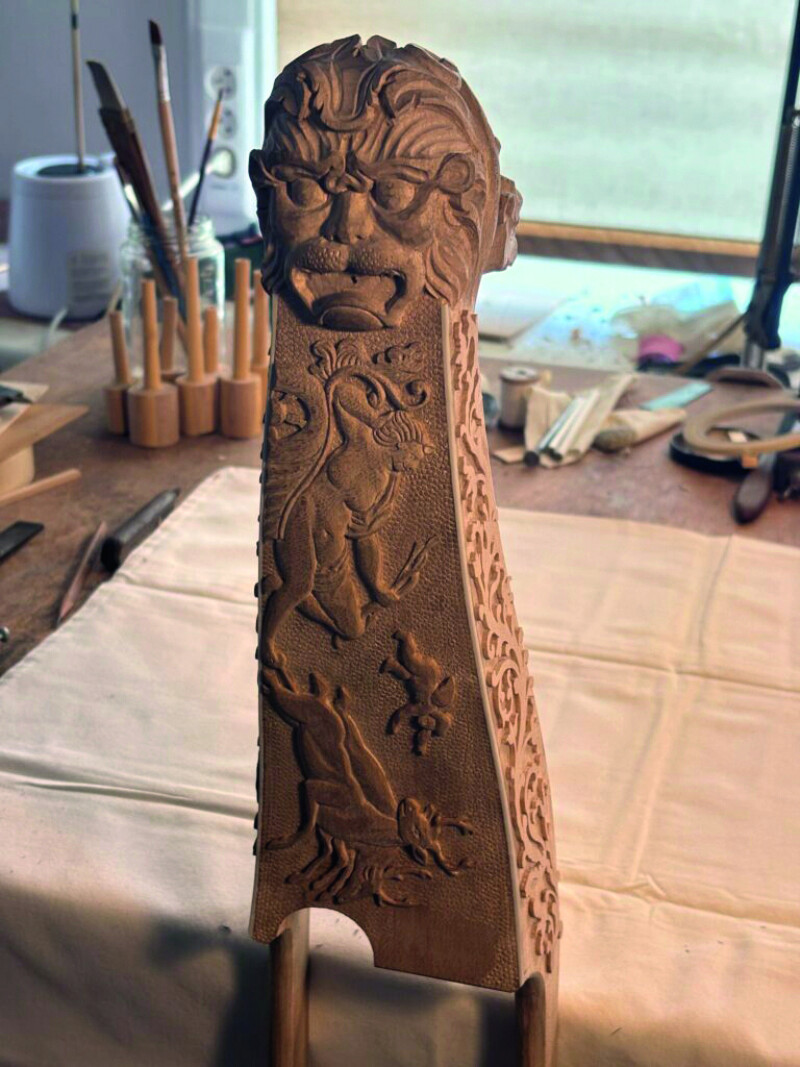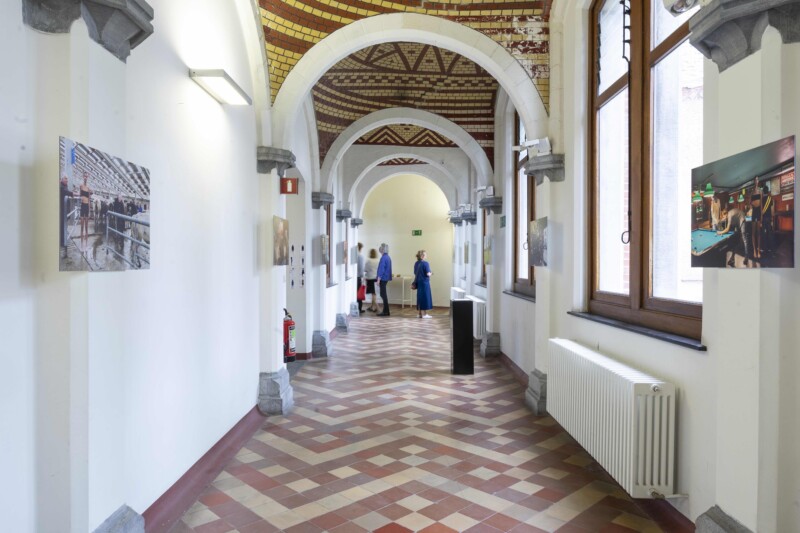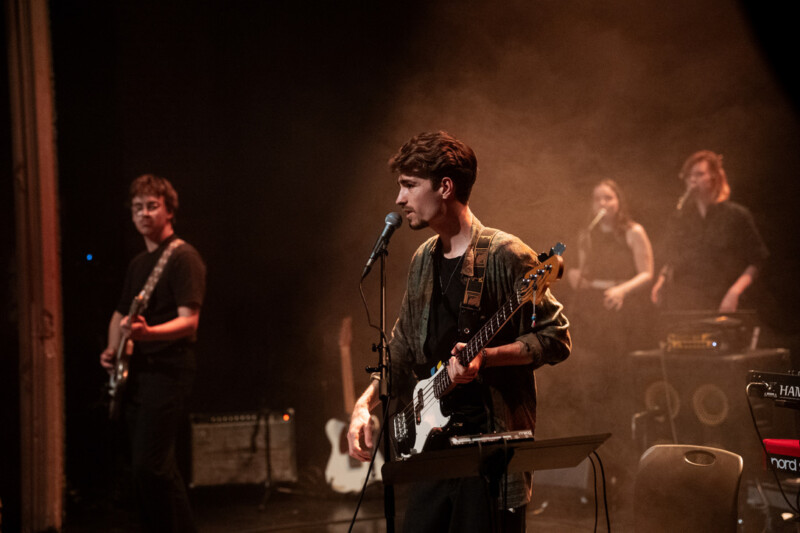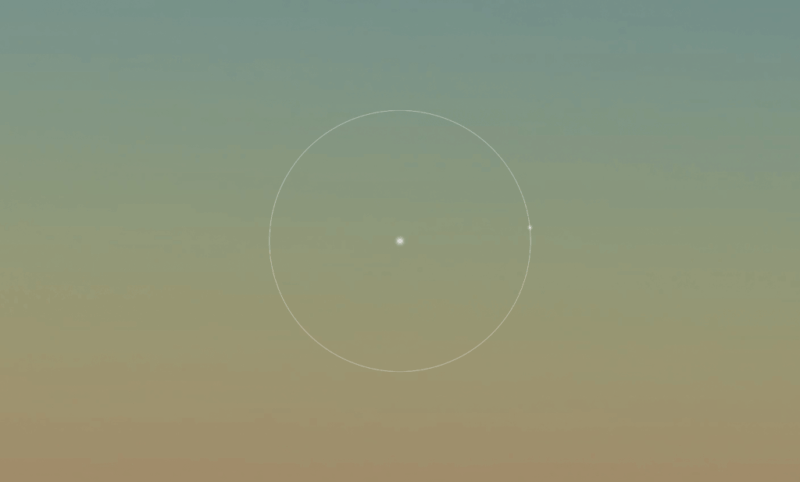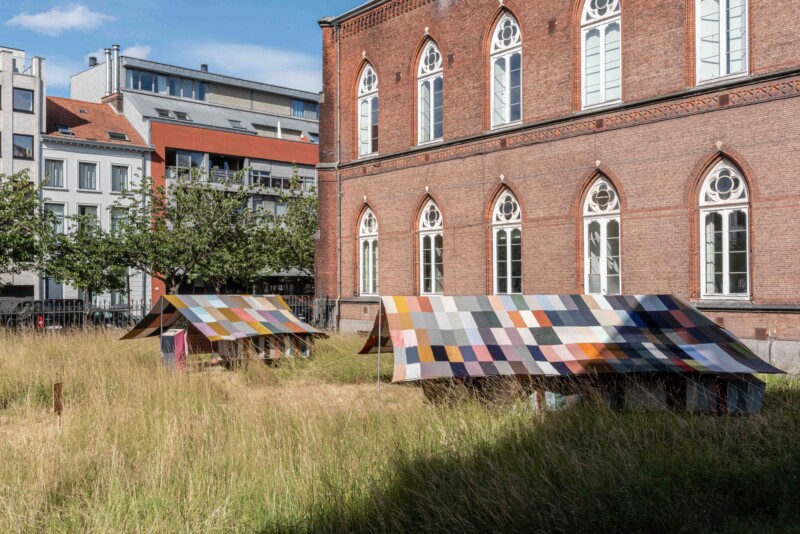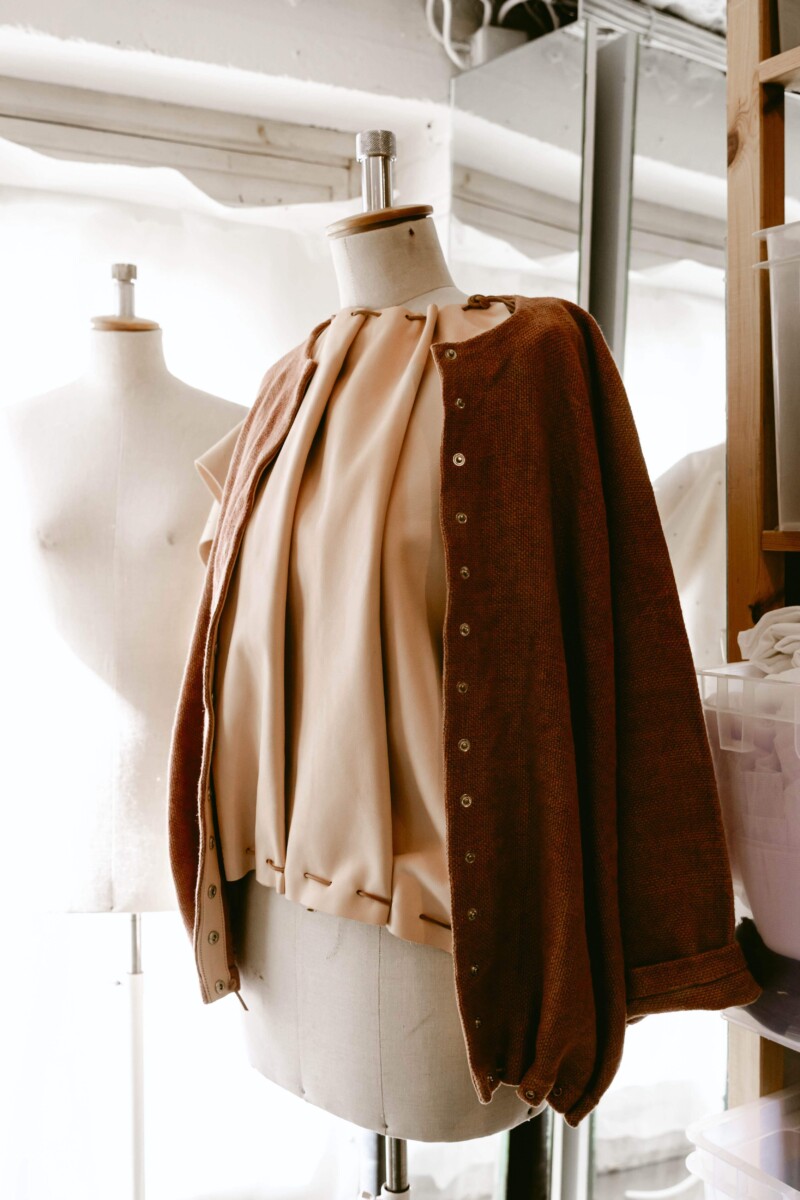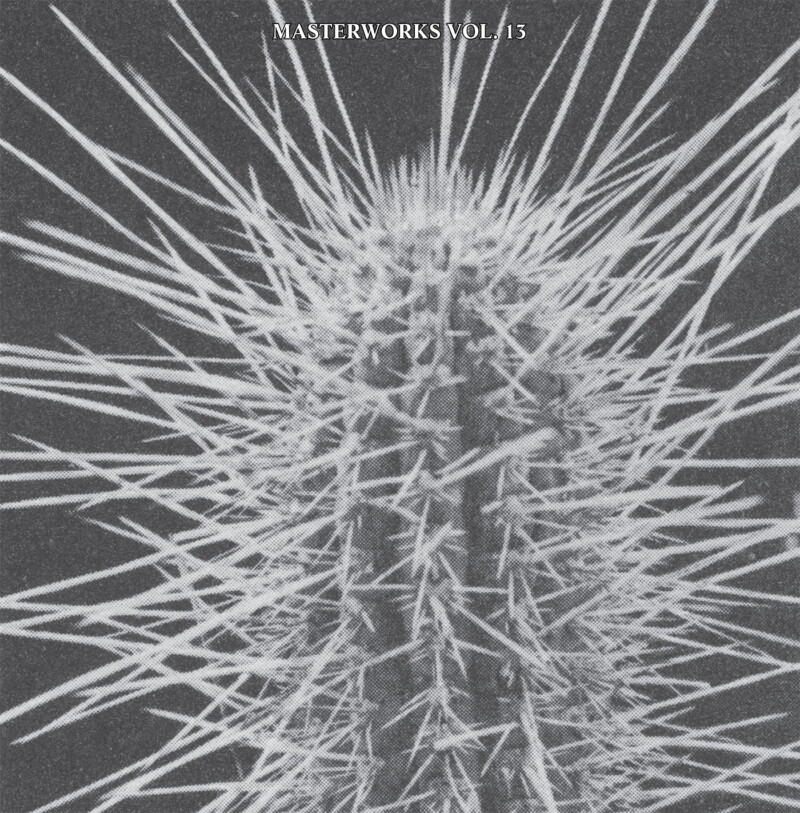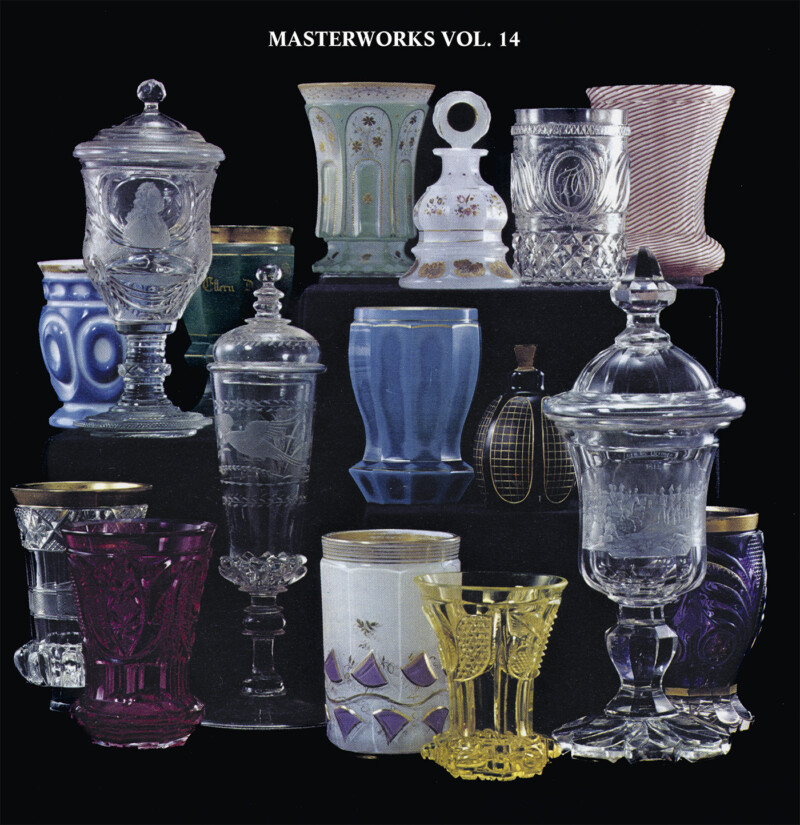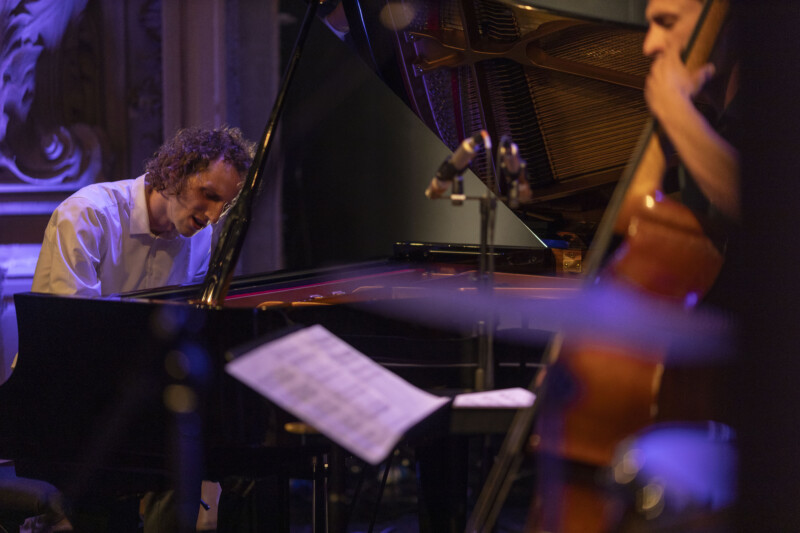Leander Vertriest
The Light and His Intergalactic Stars
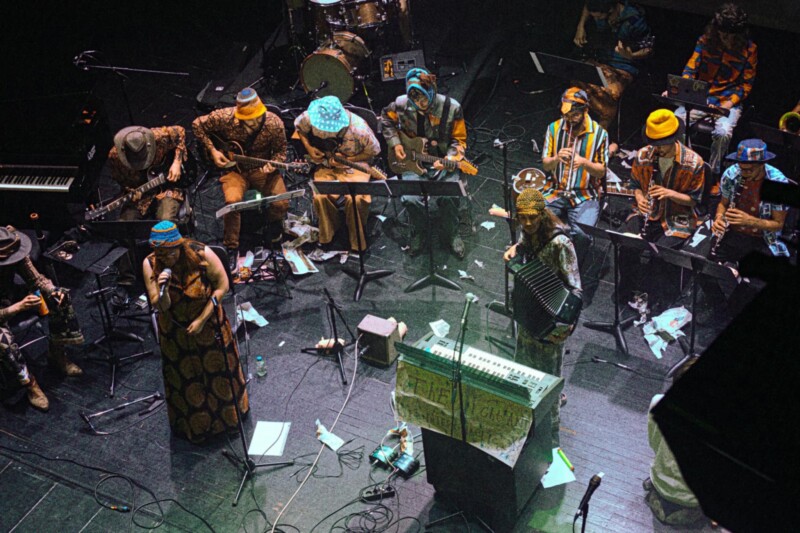
Accordionist Leander Vertriest's graduation project, 'The Light and His Intergalactic Stars', was a Gesamtkunstwerk in which music, composition, improvisation, theatre, performance, humour and carpentry all had their place. Twenty musicians and a handful of performers took to the Minard stage. Plastic pigs were employed and a table was sacrificed to the narrative. There is room for laughter, but Vertriest takes his art very seriously.

Leander explains, "I come from a circus family on my father's side. When I was about five, my father started teaching me tricks, and then I did gymnastics — athletics, hanging from bars, and so on. When I was about nine, I ended up at a Ledebirds holiday camp with Mattias Laga. You could choose different instruments there: a balalaika, boomwhackers or an accordion with a piano keyboard. It turned out that I had a talent for the accordion. Mattias noticed that, too, and let me take one home. I started playing by ear, learning songs like “Oh When the Saints” from YouTube. Then my mother told me about music school, but I'd heard from friends that it was boring. In the end, when I was about ten, I started at Kunstbrug in Gentbrugge. There, Sara Salvérius taught me the button keyboard system. I then attended the Kunstsecundair Muda high school. After that, I took the entrance exam at KASK & Conservatorium because Tuur Florizoone taught jazz accordion there, which is not offered by many schools.
Stijn Buyst
Had you already started playing other instruments besides the accordion by the time you moved to KASK & Conservatorium?
Yes. What I haven't mentioned yet is that my extended family are antique dealers and buyers. I spent my entire childhood surrounded by antiques, bric-a-brac, and second-hand goods. My passion for collecting old instruments never went away.
SB
I saw on Instagram that you recently bought three banjos.
I have lots of things lying around. I'm 23 now, and I've been collecting instruments and related items since the age of nine. Whenever I came across an old trumpet or guitar at a flea market, I would immediately start playing it. You start with little tricks, and then you begin to see the connections. I transfer the things I do on my accordion to those instruments and vice versa. I think the flea market is perhaps the greatest source of knowledge and inspiration for me. I take everything that appeals to me. The most important thing is to stay open-minded.
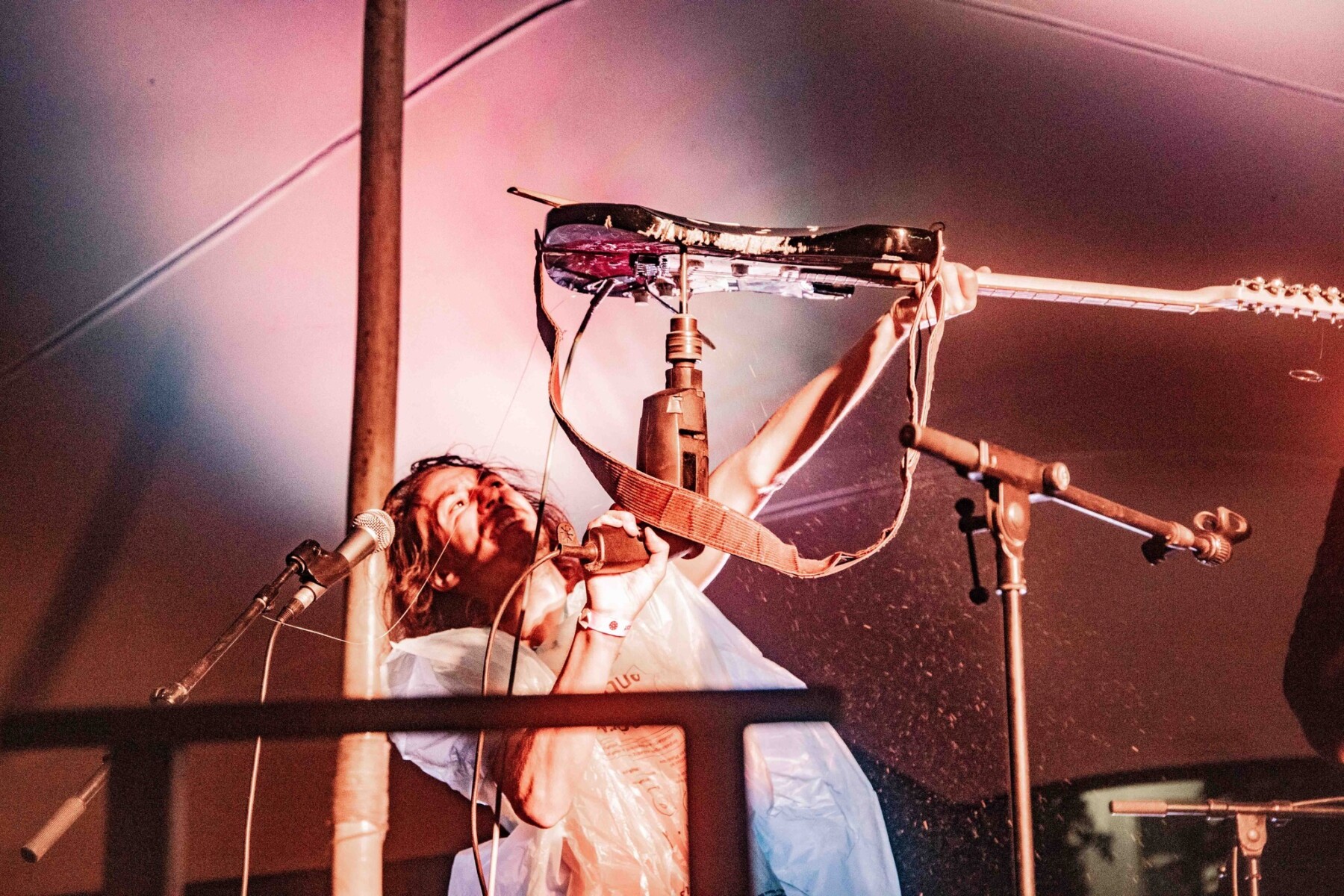
SB
So you ended up playing about fifteen completely different concerts during the Gentse Feesten (Ghent Festivities)?
Absolutely. I find it difficult to limit myself to one genre.
Some people play folk and stick to that, but I can't do that. My repertoire ranges from traditional jazz musette by Gus Viseur and Yvette Horner to French songs by Tino Rossi and Edith Piaf, as well as Ghent songs by Karel Waeri and Walter De Buck, and even experimental music and punk.
SB
But ultimately, you ended up with free jazz. Do you remember which record first drew you into that world?
I don't know how that happened. You just have to keep digging because those things don't just come your way. You can find anything at the flea market though; you just have to keep rummaging. I do know that I once walked into De Afkikker on Blandijnberg, which was owned by Rita De Vuyst. That's where I discovered the music of Steve Lacy. That must have drawn me deeper into that world. And of course there were Frederik Goossens' jazz history lessons at KASK & Conservatorium. He bombards you with names, some of which I already knew, but he also introduced me to more obscure artists such as Alexander von Schlippenbach of the Globe Unity Orchestra, Cecil Taylor and Dave Burrell with 'Echo'.
SB
You mainly mention pianists.
That's right, although I'm actually more of a saxophone player. People like Peter Brötzmann and Evan Parker. Recently, I've been doing a lot of experimenting with the saxophone myself. But of course, those pianists have often made the most bombastic music.
SB
Speaking of which, tell us about your graduation project.
It's a collection of pieces that have come together over the years. Looking back, during my bachelor's degree, I felt very... I was eager to learn, but I also wanted to retain my individuality. I have to admit that I lost that a bit back then. You had to follow the rules very strictly, which I didn't want to do. They called me a rebel, but not in a positive sense. Perhaps you should cut it here; it feels a bit strange to say that. But that's how life goes. Some things only become clear years later. I've had moments while playing where I've suddenly remembered, 'Ah, yes, that's what they taught me back then.' That bombast probably stems from the freedom I was looking for.


SB
I wasn't there, but I saw the video. There's a lot going on. A programme booklet like the ones you get at the opera might have been useful.
I considered that, but it was too short notice. My concert consisted of eight parts. In the first part, we introduced ourselves, a bit like a cultish 'here we are'. I played the organ and did something with a whistle. In the second part, a high priest came to talk about something higher: 'The light shines in our hearts, but we also want it to shine in yours'. The third part was about a bird and a girl on a bicycle. The fourth part is the ceremony, during which I saw a table split in two to make a birdhouse. This is also about freedom and its limitations. This is followed by a piece in which we sing, 'Don't forget we are children of God'. Now, God means different things to different people. It can be anything that gives you strength. For me personally, that is Bumbalu. He has a place of honour in my studio and watches over everything. The penultimate part is the 'Pig Bossa': that's a bit vaguer. I found a squeaking rubber pig at a flea market. I gave one of these pigs to each of the musicians and they were all allowed to play a solo with it. The final part is 'Peace and Love': one big party. The keywords here are “peace”, “love” and “respect”.
SB
Does your circus background have anything to do with your theatrical side?
Ultimately, it's all interwoven. You encounter all kinds of things, from circus and Chinese opera to puppet theatre and Indonesian marionettes, and everything in between, such as Pierke Pierlala.
I remember asking my supervisor, Seppe Gebruers, whether I had to play my own instrument for my graduation project. 'No,' he replied, 'actually, you don’t have to.' Could I saw a table in two? That was allowed too, on condition that I substantiated it properly. That's why I developed the theatrical aspect in that way. Good guy, this Seppe. When I came up with the idea of the birds, he gave me pieces by Messiaen — piano pieces imitating birdsong.

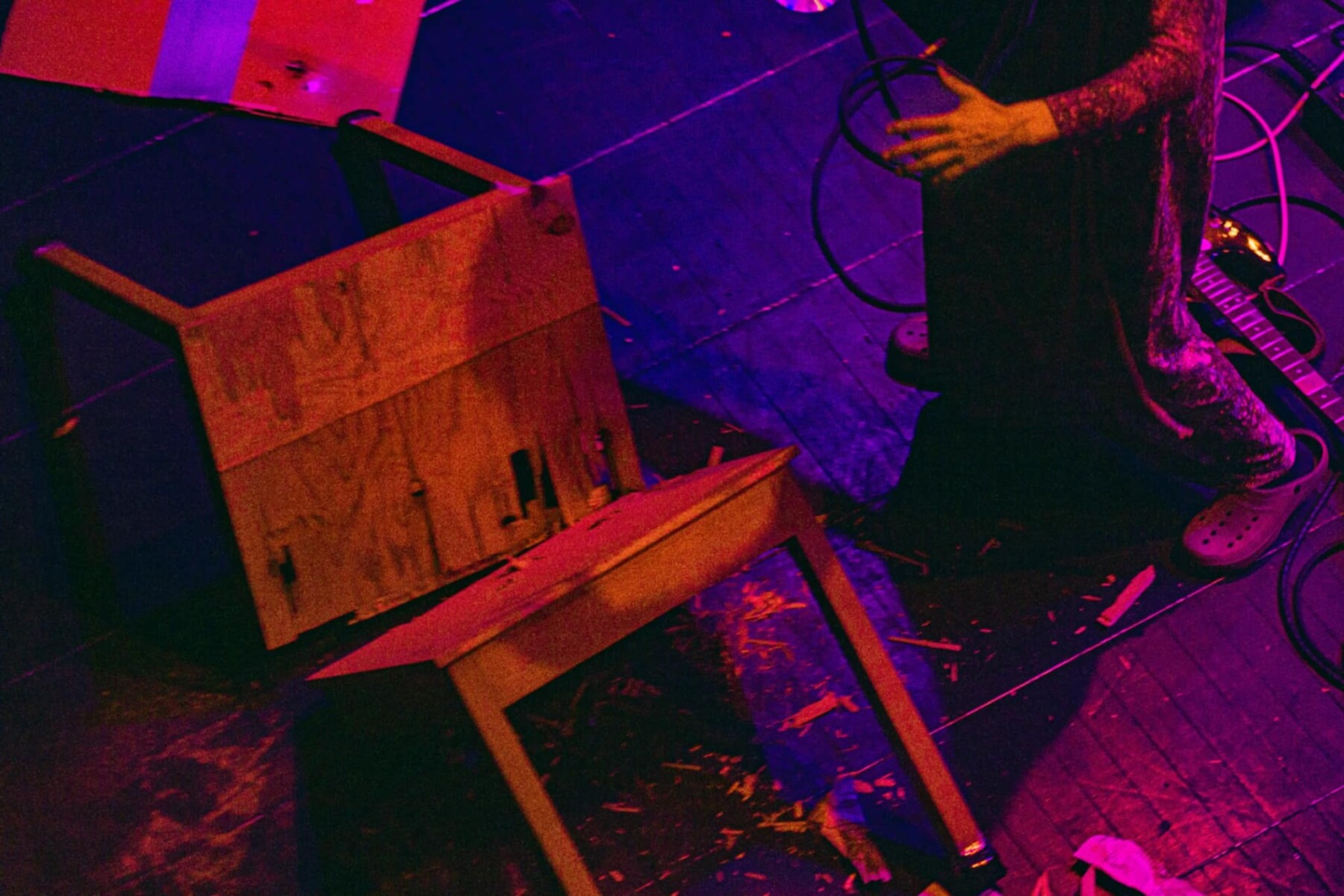
SB
You've graduated — what now?
I'm planning to do an advanced master in contemporary music. Jazz gives you a lot of freedom, but I feel that contemporary classical music gives you even more. There are always rules, but in that world, it's all about breaking them. As long as you put it on paper, anything is possible.
Another interesting point is Trio Magico, the group I'm in with Simon Cuypers and Finn Goegebeur. Simon is the saxophonist, and Finn is an excellent guitarist, a bit like Derek Bailey. I play the saxophone, guitar and piano. I work on the guitar with drills and so on. We've already had some opportunities to perform, and we've destroyed two pianos! Oh yes, El Negocito Records is going to release a record under the name FREE WE ARE NOBODY. Each cover will be unique and contain a piece of a piano, such as a key or piece of wood. Lots of people are involved, including John Dikeman and Bart Maris. Even my parents and sister are involved.
text: Stijn Buyst







